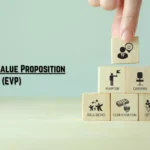Every company aspires to improve their employee engagement as we all know it ultimately leads to better productivity in the organization. Employee rewards and recognition can play a significant role in developing a sense of belonging for employees.
Employees love to be appreciated for a job well done and it makes them valued. Rewards and recognition for a job well done can not only help to boost employees more but also have several other benefits. In this blog, we discuss a few essential aspects of rewards and recognition.
What is Rewards and Recognition in the Workplace?
Rewards and recognition are the ways to show appreciation for all the efforts employees put in for a job. Any form of appreciation, gifts, trophies, praise, or gratitude towards employees can be considered as a recognition.
Rewards and recognition in any form are crucial to motivate employees and the overall productivity of the company. Let’s start with the difference between rewards and recognition.
What are the Differences Between Rewards and Recognition?
Employee rewards and recognition are the terms that are often used interchangeably. But we need to understand some factors that make employee recognition and rewards differ from each other. Here are some aspects that will help us understand the difference such as listed below.
➔ Tangibility
Tangibility is one of the huge factors that differentiate reward and recognition. Rewards are always tangible things such as bonuses, hikes, trophies, certificates, gift hampers, and much more. At the same time, employee recognition is intangible in nature such as simply uttered verbal praise or verbally expressed gratitude for someone’s contribution.
The recognition can also be displayed in formal emails and performer’s boards. The most common form of employee recognition is spoken words which are highly intangible.
➔ Scale of Expression
The scale of expression is one of the other factors that differentiate rewards and recognition. The cost of rewards is often proportionate to the perceived difficulty, skills, time, and effort the task takes or the business it brings.
Employee recognition on the other hand is handed freely there is no calculation involved when you just express appreciation to motivate your employees or to show that you value their contribution irrespective of how huge or small the task is.
A scale of reward is often a part of the company’s rewards and recognition program and is defined to provide a sense of achievement and motivate employees for greater goals in future.
➔ Predefined Structure
Employee rewards and recognition programs always have a predefined structure. Reward your employees according to the predefined criteria. At the same time, employee recognition and appreciation can be done out of the structure.
For example, if recognize that your employees are working hard towards their targets to boost their morale even though they are far from achieving them. To earn a reward employees have to cross a preset milestone in the company’s reward criteria.
➔ Frequency
Rewards provided to a staff fall in a particular cycle and have a defined frequency and schedule to be followed. The most rewards are provided in the annual employee recognition or conferences. Some employee rewards and recognition programs are also conducted on a biannual as well as every quarter.
But that does not mean that you do not express your gratitude towards your employees to motivate employees.
You can provide employee recognition for a job even if it’s not time for the usual award function yet. A few words are enough to recognize your employees personally, in meetings, or whenever you feel they can use some motivation and need a reminder that you value their work.
➔ Personalization
Employee recognition is always personal in nature as it is supposed to acknowledge the efforts of an individual or a team for a particular work. This also means there are some details involved such as highlights, and feedback for the specific action or quality that you are appreciating.
It takes more effort and real knowledge of the work they do to deliver personalized employee recognition for a job well done as a part of the formal award ceremony such as trophies and certificates.
There are no boundaries to who can deliver the personalized recognition to the employees, it can be their peer or superior. In simple words, recognition focuses on acknowledging specific achievements or behaviours and shows the commitment the company gives to its employees.
Personalizing rewards requires you to understand your employees and their hobbies and preferences better. For example, some employees would like a vacation while others may prefer cash, vouchers, or physical gifts. You need to ensure that the reward is meaningful for the employee.
For personalized rewards and to gain a specific understanding of the recipient’s preferences you can use surveys, one-on-one discussions, or employee profiles. By offering personalized rewards, organizations demonstrate that they care about the unique qualities and interests of their employees, making the recognition and rewards more meaningful and appreciated.
➔ Cost Involved
Rewards and recognition differ significantly in terms of cost and having a combination of both rewards and recognition is often financially in favour of the companies.
Rewards need financial resources whether they are in the form of direct monetary forms such as bonuses, cash prizes or salary hikes. If a company is giving non-monetary rewards they are not as expensive as the direct monetary rewards but can still be expensive as they need financial investment.
The cost of rewards is predictable and can be substantial, especially for large organizations or during times of economic challenges.
Recognition on the other hand doesn’t always need to be paid with money. Recognition can be just verbal appreciation from the peer as well as from the bosses. Even if we consider appreciation through some formal recognition event certificates, trophies, flowers, or other tokens of appreciation, the cost involved is often comparatively lesser than the cost of monetary or non-monetary rewards.
Also Read:
What are the types of Rewards and Recognition?
Rewards and recognition play a vital role in motivating individuals and teams within an organization, fostering a positive work environment and enhancing overall productivity. There are various types of rewards and recognition programs implemented by companies to acknowledge employees’ efforts and achievements.
Rewards and recognition programs play a crucial role in making your employees feel valued and motivating them for better performance. When done right the rewards and recognition program also plays a key role in creating a healthy competitive environment and increases overall productivity. Here are a few rewards and recognition program ideas for your organization.
➔ Monetary Reward
Monetary rewards can be a great motivating factor for most employees as they bear some tangible value and employees also get freedom about the utilization of the reward they receive. Monetary rewards can be provided in the form of bonuses, salary hikes, cash prizes, as well as profit sharing.
➔ Non-monetary
Non-monetary rewards are tangible in the form but are not the direct financial gain. A company can provide their top achievers rewards such as gift cards, travel packages, merchandise, and more. You can also give your employees a choice to select from various rewards. This makes them feel more valued and respected and nurtures their sense of belonging.
➔ Recognition and Rewards Events
You can also appreciate your employees by giving them a token of recognition such as awards and certificates. A formal event that can be conducted at regular intervals in the company to appreciate top employees for their efforts.
➔ Promotion
Those who excel at their work aspire to go higher on their career ladder. They also tend to look for opportunities and challenges so they can gain more knowledge. When you promote such employees it not only boosts their morale but also provides them new challenges to solve and opportunities to learn new things.
➔ Building a Culture of Recognition
When you build a work environment where everyone appreciates the work well done by people around them it keeps up their spirit and encourages smart work and dedication.
Encourage peer-to-peer recognition where employees appreciate their colleagues through various informal gestures such as spoken acknowledgment, hand-written notes, and more. It also helps you to nurture a helping attitude among the team members which strengthens their team bonding.
➔ Public Acknowledgement
Employee recognition can be done regularly irrespective of any recognition program you have in the company. You can appreciate your employee’s efforts in front of their colleague to make them feel special.
There is no cost in saying ‘thank you’ or ‘well done’ but brings a lot of benefits to rip from it. You can do it during the meetings which can be company-wide or for a particular team.
➔ Training Opportunities
Your top performers are also likely to be the ones who are eager to learn and have great potential to grow further in their careers. You can offer them a training program that benefits their work and shows the company’s investment in their employees.
➔ Flexibility
Flexible work hours and remote work facilities are always appreciated by the employees for the freedom and work-life balance it provide. When you allow the employee to choose their working hours or get the remote work facility as a reward they are likely to be motivated for better performance.
➔ Small Victories
A company can treat their employees with snacks or a tiny celebration with a cake for the milestones they achieve. This can be very useful when it comes to group projects or some long-awaited target that is finally achieved. The celebrations come as a refreshing element and employees can start their next task with renewed energy.
➔ Health and Wellness Benefits
If you want to reward your employees in a unique way you can give them memberships to some health clubs, gyms or other health-related subscriptions. You can reward them with health-related equipment and accessories to support their health and well-being.
Also Read:
What are the Benefits of Rewards and Recognition Programs?
There are numerous benefits to the rewards and recognition program. Some of these benefits are listed below.
➔ Increased Engagement
Rewards and recognition programs make the employee feel valued and appreciated for their work. It leads to motivation and desire to maintain a good performance and achieve better milestones in their work and career. This makes them more involved in their work leading to increased engagement at the workplace.
➔ Job Satisfaction
Being valued for their contribution to the organization makes people satisfied with their job and they are likely to put more effort in the future. Rewards and recognition programs make them feel content and appreciated for a job well done, playing a significant role in job satisfaction for the employee.
➔ Increased Productivity
Employees who feel valued and recognized for their work tend to be more engaged at work leading to better productivity. Positive reinforcement through a good reward recognition program plays an important part in motivating employees for better performance as well as maintaining high performance.
➔ Team Building
Peer-to-peer recognition through a good reward program encourages collaboration and a helping attitude among team members to achieve their goals. The collaboration leads to mutual respect toward work and effort by team members resulting in a supportive team environment.
➔ Better Retention
When a company builds a culture of recognition it also earns employees loyalty leading to better retention. When an organization appreciates its employees it also indirectly builds its employer brand and it becomes easier to attract top talent to the organization.
➔ Positive Work Culture
Employee reward and recognition programs help in building a positive and supportive work environment for employees in the company. Makes employees feel supported and valued for their efforts leading to pleasant and healthy competition among employees.
➔ Better Product and Services
Happy employees can nurture a happy and satisfied customer base as employees deliver high-quality products and services to them. Employees who are recognised are more likely to bring their hundred percent when it comes to customer service and product quality.
On the other hand, if employees are not appreciated for their efforts they stay confined to the bare minimum leading to dissatisfaction and complaints from the customers.
Also Read:
How to Design a Good Rewards and Recognition Program?
A good employee reward and recognition program can be a great strategic tool for the company as it increases employee loyalty and engagement at work. Along with keeping employees satisfied and motivated this can help you to achieve your organizational goal faster.
A good employee rewards and recognition program helps you to align employee values with company values. Here are a few tips to help you design a good employee reward and recognition program.
➔ Consider Organizational Values
Your rewards and recognition program should help to incorporate the organisation’s values into the day-to-day employee behaviour.
For example if your organization values punctuality and professional conduct you can design your recognition and rewards program around that value and reward the employees for their good attendance record, exceptional record with deadlines, and more.
➔ Clarity in Objectives
Once you recognise the values you want to incorporate into the company you can define your objective. You must state your objectives in very clear and easy-to-understand words. The goals and objectives will drive the entire employee rewards and recognition program.
That makes it essential to bring clarity to it so that as a result of your reward and recognition you can see a significant shift in employee behaviour in the desired direction.
➔ Ask for Inputs
Ask your employees about their opinions on the kind of reward and recognition that are more likely to motivate them. That helps you to optimize the program to get better participation. In addition to that you can ask employee’s opinions on creating feasible conditions with essential resources which will help them to achieve their goals faster.
➔ Measure and Adapt
It’s crucial to monitor how effective is your reward program so that you can make the changes when needed. Define key factors on which you want to measure the effectiveness of the recognition program such as employee participation and progress on the primary objective. If you think that you are not getting the results you expected it’s time to check what went wrong and improve it.
➔ Keep Frequency and Consistency
When it comes to recognition consistency is the key. Don’t wait for the award function to appreciate the job well done. Ensure that you recognise the employee’s every small and big achievement with your words as soon as possible.
It helps to make your employees feel valued and keep their morale up. In addition to that you follow a schedule for your reward program with the pre-decided frequency as it is essential to maintain the employee trust.
Summary
Employee rewards and recognition program plays a significant role in improving employee engagement and job satisfaction. That is an important factor in employee productivity. You must design an employee recognition program that supports your objective so that you can get faster results.









